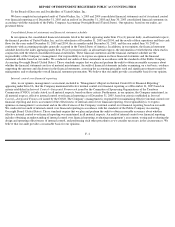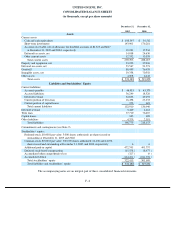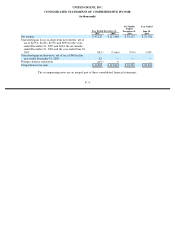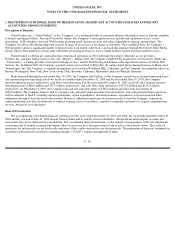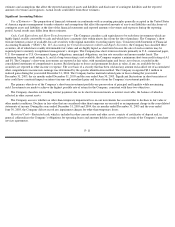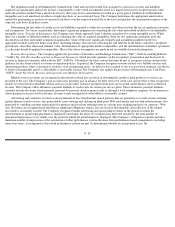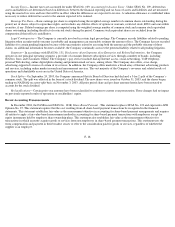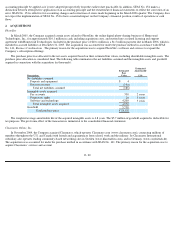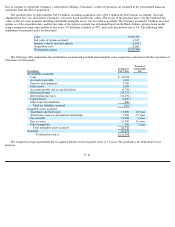Classmates.com 2005 Annual Report Download - page 80
Download and view the complete annual report
Please find page 80 of the 2005 Classmates.com annual report below. You can navigate through the pages in the report by either clicking on the pages listed below, or by using the keyword search tool below to find specific information within the annual report.
estimates and assumptions that affect the reported amounts of assets and liabilities and disclosure of contingent liabilities and the reported
amounts of revenues and expenses. Actual results could differ from those estimates.
Significant Accounting Policies
Use of Estimates— The
preparation of financial statements in conformity with accounting principles generally accepted in the United States
of America requires management to make estimates and assumptions that affect the reported amounts of assets and liabilities and disclosure of
contingent assets and liabilities at the date of the financial statements and reported amounts of revenues and expenses during the reporting
period. Actual results may differ from those estimates.
Cash, Cash Equivalents and Short-Term Investments— The Company considers cash equivalents to be only those investments which are
highly liquid, readily convertible to cash and which have a maturity date within ninety days from the date of purchase. The Company’s short-
term investments consist of available-for-sale securities with original maturities exceeding ninety days. Consistent with Statement of Financial
Accounting Standards (“SFAS”) No. 115, Accounting for Certain Investments in Debt and Equity Securities, the Company has classified these
securities, all of which have readily determinable fair values and are highly liquid, as short term because the sale of such securities may be
required prior to maturity to implement management’s strategies. The Company has short-term investments primarily in U.S. commercial paper,
U.S. Government or U.S. Government Agency obligations, municipal obligations, auction rate securities and money market funds. The
minimum long-term credit rating is A, and if a long-term rating is not available, the Company requires a minimum short-term credit rating of A1
and P1. The Company’s short-term investments are reported at fair value, with unrealized gains and losses, net of taxes, recorded in the
consolidated statements of comprehensive income. Realized gains or losses and permanent declines in value, if any, on available-for-sale
securities are reported in other income or expense. The cost basis of a security that has been sold and any amount reclassified out of accumulated
other comprehensive income into earnings was determined by the specific identification method. The Company recognized $0.1 million in
realized gains during the year ended December 31, 2004. The Company had no material realized gains or losses during the year ended
December 31, 2005, the six months ended December 31, 2003 and the year ended June 30, 2003. Significant fluctuations in short-term interest
rates could have a material impact on interest income and unrealized gains and losses from the Company’s investment portfolio.
The primary objectives of the Company’s short-term investment portfolio are preservation of principal and liquidity while maximizing
yield. Investments are made to achieve the highest possible rate of return for the Company, consistent with these two objectives.
The Company classifies outstanding interest payments due on its short-term investments as interest receivable, the balance of which is
reflected in other current assets.
The Company assesses whether an other-than-temporary impairment loss on our investments has occurred due to declines in fair value or
other market conditions. Declines in fair value that are considered other than temporary are recorded as an impairment charge in the consolidated
statements of income. During the years ended December 31, 2005 and 2004, the six months ended December 31, 2003 and the year ended
June 30, 2003, the Company did not record any impairment charges for other-than-temporary losses.
Restricted Cash— Restricted cash, which is included in other current assets and other assets, consists of certificates of deposit and, in
general, collateralizes the Company’s obligations for operating leases and amounts held in escrow related to certain of the Company’s merchant
services agreements.
F- 11



